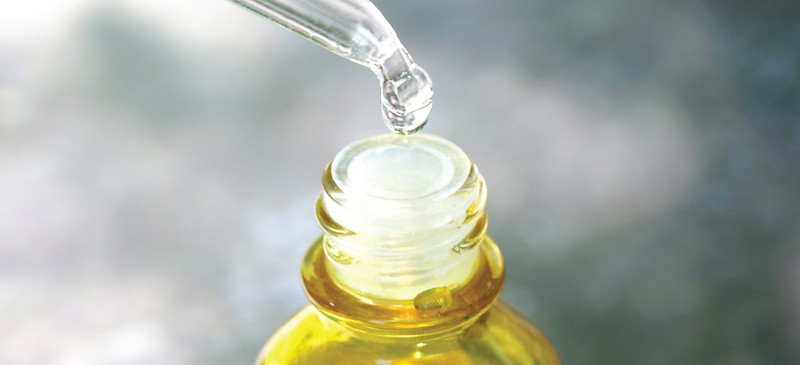This Dr. Axe content is medically reviewed or fact checked to ensure factually accurate information.
With strict editorial sourcing guidelines, we only link to academic research institutions, reputable media sites and, when research is available, medically peer-reviewed studies. Note that the numbers in parentheses (1, 2, etc.) are clickable links to these studies.
The information in our articles is NOT intended to replace a one-on-one relationship with a qualified health care professional and is not intended as medical advice.
This article is based on scientific evidence, written by experts and fact checked by our trained editorial staff. Note that the numbers in parentheses (1, 2, etc.) are clickable links to medically peer-reviewed studies.
Our team includes licensed nutritionists and dietitians, certified health education specialists, as well as certified strength and conditioning specialists, personal trainers and corrective exercise specialists. Our team aims to be not only thorough with its research, but also objective and unbiased.
The information in our articles is NOT intended to replace a one-on-one relationship with a qualified health care professional and is not intended as medical advice.
Mineral Oil Benefits for Constipation and Skin Moisturizing
February 2, 2024

If you prefer using natural skin care products over those that tend to be more perfumed, processed and potentially irritating, consider trying mineral oil — though you need to be aware of potential side effects. It is generally considered as safe to use in food additives, medical products, cosmetics and personal care products.
Overall, not only does mineral oil appear to help moisturize skin and prevent symptoms like dryness and cracking, it can also treat dandruff, excess earwax and constipation, too.
What Is Mineral Oil?
Mineral oil is defined as “a colorless, oily, almost tasteless, water-insoluble liquid.” It’s usually either a standard light density (or light mineral oil) or a standard heavy density (heavy mineral oil). It’s composed of mostly alkanes and cycloalkanes.
This type of oil is actually distilled from petroleum and found in products such as cosmetics, carrier oils, some medicines and lubricant laxatives. It’s often created as a byproduct of refining crude oil to make gasoline.
It’s created when crude oil is distilled first at atmospheric pressure and then under a high vacuum to yield distillates and residual fractions that can be further refined to make mineral oils.
What is mineral oil good for? It’s used as a natural laxative to help treat constipation, lubricant and moisturizer.
It’s different than other vegetable oils that have similar uses, such as jojoba or almond oils (two popular carrier oils for essential oils), but it is related to petroleum jelly. (Note: mineral oil is not a suitable carrier oil for aromatherapy or the topical application of essential oils.)
Types
Mineral oil comes in multiple grades that are based on the refinement process.
A variety of products have been referred to as “mineral oil” throughout history. To make things more confusing, today mineral oil goes by several other names depending on the country, including:
- white oil
- paraffin oil
- liquid paraffin (a highly refined medical grade)
- paraffinum liquidum (Latin)
- liquid petroleum
There are several types of mineral oils available in drug stores, supermarkets and online, along with many ways to use these products depending on the symptoms you’re treating. It can be taken by mouth, applied to the skin, used as an enema or used as a personal lubricant.
If used to lubricate the skin, it comes in forms such as ointments, creams and personal (vaginal) lubricants. Baby oil is also considered a type of perfumed mineral oil that safely can be applied to the skin of infants/babies.
Mineral oil is the active ingredient in some types of laxatives and may be described as a lubricant even if used in this way. A popular brand name for a laxative made with this type of oil is Kondremul.
Food-grade mineral oil is the type used on kitchen supplies, such as to treat wood cutting boards, countertops, etc.
Benefits
1. Has Laxative Effects
When taken internally (and therefore considered an over-the-counter drug), mineral oil is often called liquid paraffin. The most common reason it’s used as a drug is to help treat constipation due to its laxative effects.
In fact, it’s often used a placebo and was discovered to also have a laxative effect. A study examined its use and confirmed that mineral oil was essentially inert, “with no systemic effects in humans when taken orally, other than a lubricating laxative effect in the gastrointestinal tract.”
It works to alleviate constipation by retaining water in stool and the intestines, lubricating the bowels, and making it easier to pass a bowel movement without straining.
For laxative purposes, it can be taken orally (my mouth) or used as an enema. When inserted as an enema, most of the oil will actually be excreted in the stool once someone goes to the bathroom.
People who have internal tears (fissures) or hemorrhoids may also use this oil to help decrease discomfort.
2. It’s Lubricating/Moisturizing
According to a 2017 report, “[Mineral oils] are used in skin and lip care cosmetic products due to their excellent skin tolerance as well as their high protecting and cleansing performance and broad viscosity options.” Studies over the years have found that it can improve skin’s softness and barrier functions.
You’ll find mineral oil in baby lotions, cold creams, ointments and cosmetics because it has several advantages as a natural moisturizer:
- lightweight and non-greasy
- inexpensive to produce
- odorless and tasteless
- can be applied safely to sensitive skin, infants’ skin and even the eyelashes to prevent brittleness
It works by keeping moisture from escaping the skin, which reduces dryness, cracking and peeling. Some of the conditions it can help treat include:
- cradle cap and diaper rash in infants/babies (try it in this DIY diaper rash cream)
- mild eczema when applied to the affected area (use it to make your own eczema cream)
- dry, cracked feet
3. Can Safely Remove Makeup
Another skincare use of mineral oil is removing makeup and even temporary tattoos.
When using it for this purpose, look for highly refined and purified mineral oil (the type found in cosmetics and skincare products) that is non-comedogenic and will not clog pores or lead to breakouts. Drop a few drops on a clean cotton swab, and gently rub over your face before washing it.
4. Helps to Draw Out Earwax
If you’re someone who deals with an accumulation of earwax that can be hard to remove, try applying several drops of mineral oil into the ear to soften the wax.
The oil is actually safe to leave inside your ear for a day or two, before removing it with a syringe or warm water. (Look for kits that help with removal in drug stores, or ask your healthcare professional.)
5. Can Help Treat Dandruff
Why is mineral oil good for your hair and scalp? It can help treat dandruff when brushed into the scalp, followed by shampooing as normal to remove any residual oil.
Leave it on your scalp for an hour, comb or brush through, then shampoo and condition. Try using this homemade dandruff shampoo.
For best results, repeat this process at least once a week.
Other household/industrial mineral oil uses include:
- Personal/vaginal lubricant — The American Society for Reproductive Medicine uses this type of oil as a fertility-preserving vaginal lubricant. One thing to point out, however, is that it can degrade latex and should not be used with condoms.
- Food preparation — Mineral oil can prevent water absorption, and because it has no flavor and odor, food-grade mineral oil is a popular preservative for cooking tools. It’s used to treat wooden cutting boards, salad bowls and utensils to prevent cracking and absorption of odors.
- Treating/preserving wood— It can treat wood by preventing water absorption, cracks or splits.
- Veterinary uses — Just like with people, it can be given to pets for help relieving constipation.
- Making candles
- Producing brake fluid
- For pest control purposes
- Making confectionery/pastries
Dosage
As mentioned above, there are several different ways to use mineral oil, which determines the dosage.
If used as a laxative, read directions carefully and follow dosage guidelines to prevent taking too much. Keep in mind that the oil’s effects can take six to eight hours to kick in, so many people choose to take it before bedtime.
If taking this oil orally, adults and children over 12 years old should take between 15 and 45 mL/day, either in a single or divided dose. Children over 6 years old should take between 5–15 mL/day, in either a single or divided dose.
This dosage is equivalent to about one to three tablespoons of most laxative products.
If using it on your skin or scalp, start with several drops, ideally mixed with other beneficial ingredients. If applying inside the ears, carefully use several drops but not a large amount.
Risks and Side Effects
Is mineral oil bad for you? Recent reviews have found that when used properly, it poses little risk for harm, but it must first be treated and refined in order to be used safely on the skin or taken internally.
Depending on the dose and how it’s taken, mineral oil side effects can possibly include:
- Lipid pneumonitis
- Fecal incontinence
- Intestinal malabsorption
- Impaired absorption of fat-soluble vitamins
- Rectal discharge of mineral oil
- Anal itching and irritation
- Abdominal cramps, nausea and vomiting
- Trouble breathing in severe cases
Here are some tips for this product in a way that limits mineral oil side effects:
- Be careful not to inhale mineral oil mist, which can damage the airways and rarely even lead to pneumonia.
- Do not use this product if you have a respiratory condition, gastric/esophageal condition or are taking medications. Get your healthcare professional’s approval before starting use, since this oil can potentially interact with dozens of different medications.
- Do not use this oil while pregnant, since it may lead to complications.
- Do not give this oil in oral form to children under the age of 6.
- Don’t combine this product with other laxatives or stool softeners, which can lead to diarrhea and other gastrointestinal issues.
- Take the oil internally on on empty stomach or at least two hours after or before a meal. This helps prevent vitamins and minerals from not being absorbed properly when mixed with mineral oil.
Is mineral oil a carcinogen? The World Health Organization classifies untreated or mildly treated mineral oils as group 1 carcinogens to humans. This is because they are capable of damaging the airways when inhaled as mist. However, highly refined oils are classified as group 3, meaning that they are not suspected to be carcinogenic.
Conclusion
- What is mineral oil? It’s a colorless, oily, almost tasteless, water-insoluble liquid. It’s found in cosmetics, carrier oils and lubricant laxatives.
- Mineral oil uses include moisturizing the skin; treating dandruff, cradle cap, cracked feet, mild eczema and other skin problems; helping remove earwax; and relieving constipation.
- You can apply this oil to your skin or take it internally if it’s refined and foo- grade. It’s also used as an enema for constipation.
- It’s possible to experience mineral oil side effects, such as diarrhea, stomach pains, malabsorption of vitamins and rarely even pneumonia, if certain unrefined types are inhaled as mist.









